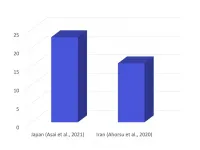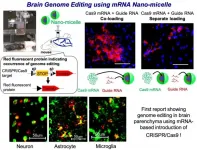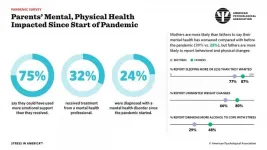According to the most recent comprehensive data from the Centers for Disease Control and Prevention (CDC), stroke is the fifth leading cause of death in the United States and a major contributor to long-term disability. Stroke occurs when a blood vessel to or in the brain either becomes blocked or bursts, preventing blood and oxygen from reaching all of the brain. Treatment to quickly restore blood flow to the brain is essential to improve outcomes and survival.
Mobile stroke units are ambulances with specialized staff and equipment to quickly diagnose and treat stroke on the way to the hospital. When every minute is critical, the mobile stroke unit staff can administer medications to restore blood flow, control bleeding or lower high blood pressure before reaching the emergency department. However, mobile stroke units are not widely available, in part because there are no established means for the government or insurance companies to reimburse the costs of care provided by mobile stroke units, especially when specialized tests (CT scans, etc.) and medications are administered outside of a hospital.
"If mobile stroke units cannot be reimbursed for the important care they provide, this vital service will be lost unless private donors are willing to continually step up to support these programs," said study lead author Kenneth Reichenbach, M.S.N., F.N.P.-C., A.G.A.C.N.P.-B.C., B.S.R.T.-(R), PHRN, program director of the Mobile Stroke Unit at Lehigh Valley Health Network in Allentown, Pennsylvania. "We need overwhelming, united support for this to change within federal entities including the Centers for Medicare and Medicaid Services to explore appropriate pathways for Medicare reimbursement for the full range of advanced mobile stroke unit services."
Through a blinded survey, researchers collected information in June 2019 (to reflect the previous 12 months of their operation) from all 20 U.S. mobile stroke unit programs. Of the 19 units that responded, 18 reported negative financial status while one, classified as an outpatient clinic and not an ambulance, reported a positive financial status. All mobile stroke programs depend at least partly on funding from personal gifts, grants or institutional support because of billing restrictions from health care insurers.
In other findings, the programs reported administering critical clot-busting medications to stroke patients an average of 72 times per year (median of 30) over the 12 months surveyed for all mobile stroke unit programs combined. Each program is open and available nearly every day of the month, with 600 responses per year, on average, for all programs combined. All mobile stroke units can perform CT scans (computed tomography) to image the brain, and 21% have an additional certification as certified CT mobile laboratories. Each mobile stroke unit has an average of four staff members on board at a time, which may include a CT technologist, paramedic/emergency medical technician, stroke nurse and a stroke expert. Individuals working as stroke experts vary by program: 37% have medical doctors and 16% have an advanced practice health care professional. In 47% of the programs, telemedicine is used instead of an on-board expert to connect remotely to a stroke expert.
"Mobile stroke units diagnose and treat patients with acute stroke safely and considerably faster than patients arriving to an emergency department by regular ambulance or private auto," Reichenbach said. "Saving brain tissue could translate into better functional outcome and quality of life for many more stroke patients."
The American Heart Association's 2019 Recommendations for the Establishment of Stroke Systems of Care suggests reimbursement is an issue that warrants further investigation before there is widespread use of mobile stroke units.
To recognize stroke symptoms requiring immediate treatment, the American Stroke Association recommends everyone remember the acronym F.A.S.T. for face drooping, arm weakness, speech difficulty, time to call 9-1-1. Fortunately, most strokes are preventable through healthy lifestyle choices: not smoking; eating healthy foods; being physically active; maintaining a healthy body weight; and controlling high blood sugar, cholesterol and blood pressure.
INFORMATION:
Co-authors are Claranne Mathiesen, R.N., M.S.N., C.N.R.N.; Leslie Thomas, A.A.; Margaret Hilger, B.A.; James C. Grotta, M.D.; and Anne W. Alexandrov, Ph.D., R.N. Author disclosures are listed in the abstract.
The Prehospital Stroke Treatment Organization (PRESTO) funded the study.
Additional Resources:
Multimedia is available on the right column of release link https://newsroom.heart.org/news/life-saving-role-of-mobile-stroke-units-at-risk-due-to-reimbursement-limitations?preview=6780a90dd239eacf4f829aa1a437b0c9
Don't Die of Doubt
What is Brain Health?
Fast treatment via mobile stroke unit reduced survivor disability
Mobile stroke units could expedite treatment and improve patient outcomes in urban areas
American Stroke Association policy statement on stroke systems of care
For more news at ASA International Stroke Conference 2021, follow us on Twitter @HeartNews #ISC21.
Statements and conclusions of studies that are presented at the American Heart Association's scientific meetings are solely those of the study authors and do not necessarily reflect the Association's policy or position. The Association makes no representation or guarantee as to their accuracy or reliability. The Association receives funding primarily from individuals; foundations and corporations (including pharmaceutical, device manufacturers and other companies) also make donations and fund specific Association programs and events. The Association has strict policies to prevent these relationships from influencing the science content. Revenues from pharmaceutical and biotech companies, device manufacturers and health insurance providers are available here, and the Association's overall financial information is available here.
The American Stroke Association's International Stroke Conference (ISC) is the world's premier meeting dedicated to the science and treatment of cerebrovascular disease. ISC 2021 will be held virtually, March 17-19, 2021. This 3-day conference features more than 1,200 compelling presentations in 21 categories that emphasize basic, clinical and translational sciences as they evolve toward a better understanding of stroke pathophysiology with the goal of developing more effective therapies. Engage in the International Stroke Conference on social media via #ISC21.
About the American Stroke Association
The American Stroke Association is devoted to saving people from stroke -- the No. 2 cause of death in the world and a leading cause of serious disability. We team with millions of volunteers to fund innovative research, fight for stronger public health policies and provide lifesaving tools and information to prevent and treat stroke. The Dallas-based association officially launched in 1998 as a division of the American Heart Association. To learn more or to get involved, call 1-888-4STROKE or visit stroke.org. Follow us on Facebook, Twitter.



